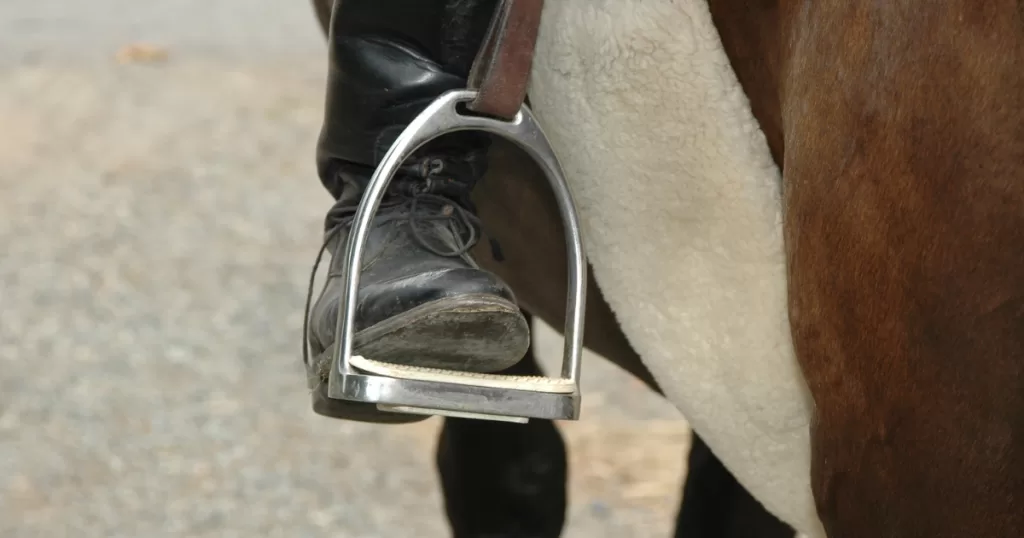
For new equestrians, the array of tack and its uses can be overwhelming. Whether you’re grooming your first horse or gearing up for a ride, understanding how tack functions and how to use it properly is essential for both safety and comfort. Let’s break down the basics of tack and its components to help you navigate this crucial aspect of horse riding.
Ready to Become a Confident Rider?
Sign up to our Free Newsletter for exclusive tips, tricks and tidbits that will help you grow as a beginner equestrian.
1. What is Tack?
Tack refers to the equipment and gear used to ride and handle horses. It includes everything from saddles and bridles to harnesses and stirrups. Proper tack ensures a comfortable and secure fit for both horse and rider, which is key to effective communication and safe riding.
2. Key Components of Tack
Saddle: The saddle provides a comfortable seat for the rider and distributes the rider’s weight evenly across the horse’s back. There are various types of saddles, including English, Western, and Dressage saddles, each designed for different riding styles.
- English Saddles: Often used for jumping and dressage, these saddles are lighter and have a flatter seat.
- Western Saddles: Known for their larger size and more secure design, Western saddles are ideal for long rides and cattle work.
- Dressage Saddles: Featuring a deeper seat and longer flaps, these saddles are designed for the precision required in dressage training.
Bridle: The bridle is worn on the horse’s head and includes the bit and reins. It allows the rider to communicate with the horse through signals.
- Snaffle Bridle: Common in English riding, this bridle includes a simple bit with a jointed mouthpiece.
- Double Bridle: Used in dressage, it features two bits and allows for more refined control.
- Western Bridle: Typically includes a bit with a curb strap, providing more leverage and control for Western riding.
Bit: The bit is a metal piece that goes into the horse’s mouth and is connected to the reins. It aids in communication between the rider and horse.
- Snaffle Bit: Mild and used for general riding.
- Pelham Bit: Offers more control, often used in English disciplines.
- Western Bit: Typically more severe and used for Western riding.
Girth/Latigo: The girth is a strap that goes around the horse’s belly and holds the saddle in place.
- English Girth: Usually a wide, padded strap.
- Western Cinch: A similar function to the English girth but often wider and more rugged.
Stirrups: Stirrups are metal or leather loops attached to the saddle where riders place their feet. They provide support and help with mounting and dismounting.
Martingale: Used to prevent the horse from raising its head too high, the martingale is attached to the saddle and bridle.
- Running Martingale: Allows freedom of movement but limits head height.
- Standing Martingale: Keeps the horse’s head in a more fixed position.
3. How to Use Tack Properly
Saddle Fitting: Make sure the saddle fits your horse properly to avoid discomfort and potential injuries. The saddle should sit evenly on the horse’s back and not shift while riding.
Bridle Adjustment: Adjust the bridle to fit snugly but comfortably. The bit should sit just below the horse’s cheekbone, and the bridle should not pinch or rub.
Girth/Cinch Adjustment: Ensure the girth or cinch is snug but not overly tight. You should be able to fit a few fingers between the girth and the horse’s belly.
Stirrups: Adjust the stirrups to the correct length for your leg. They should be even and at a height that allows you to maintain proper leg position while riding.
Cleaning and Maintenance: Regularly clean and inspect all tack to ensure it remains in good condition. Leather tack should be cleaned with a damp cloth and conditioned to prevent cracking.
4. Common Mistakes to Avoid
- Overtightening: Avoid overtightening the girth or bridle, which can cause discomfort or injury.
- Improper Fit: Make sure all tack fits correctly to prevent shifting and to ensure comfort.
- Neglecting Maintenance: Regular care and inspection of tack are crucial for safety and longevity.
5. Conclusion
Understanding tack and how to use it effectively is crucial for any rider. Proper fit and maintenance ensure the comfort and safety of both horse and rider, leading to a more enjoyable and successful riding experience. As you gain experience, you’ll become more adept at adjusting and using tack, enhancing your overall equestrian journey.
Feel free to ask any questions or share your experiences with tack!
Ready to Become a Confident Rider?
Sign up to our Free Newsletter for exclusive tips, tricks and tidbits that will help you grow as a beginner equestrian.
